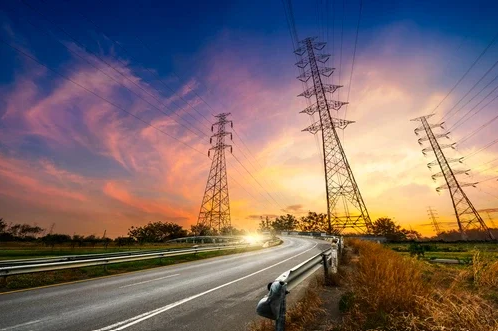

Infrastructure provides heat, power, mobility, clean water, waste treatment and digital connectivity – all services that underpin a functioning society. It also has the potential to enable change: to improve livelihoods, reduce inequality, improve productivity and support green outcomes.
When there’s a societal imperative, infrastructure can provide the foundation for it to be achieved.
This is particularly true of our response to climate change. Economies must fully decarbonise globally by 2050 to give a reasonable chance of keeping the temperature rise below 1.5°C by the end of the century. This goal is a firm policy objective in many countries, including the UK and the EU.
The role of infrastructure in the green transition
Using the UK as an example, infrastructure accounts for around 54% of total annual emissions. The emissions that come from the construction and operation of infrastructure assets (capital and operational carbon, respectively) represent around 13% of the total. But by far the largest component, making up the remaining 41%, are emissions arising from using infrastructure – referred to as user carbon.
The carbon footprint of each business and citizen in the economy is highly dependent on the emissions intensity of the infrastructure they use – that is, the energy and physical resources they use, the data they consume and the transport options available to them.
Significant improvements have been made to the emissions intensity of some sectors since 2010. The energy and waste sectors, in particular, have been subject to ambitious policy packages over this period.
But progress isn’t fast enough and other sectors like transport lag behind. The choices and behaviours of individuals can help, but without accelerated decarbonisation of the infrastructure services on which we all rely, the 2050 target will be hard to meet.
Mobilising investment in low-carbon infrastructure
This is a theme that came out strongly in the recent independent review of the UK’s net-zero policies and one that is central to the EU’s Green Deal package. An estimated £40bn of annual investment in infrastructure is required over the next decade if the UK is to meet its net-zero commitment. Across the EU, this figure is approximately €737bn per year to 2035.
These are substantial numbers that require unprecedented collaboration between policymakers and investors. Infrastructure assets are characterised by long construction lead times and decades-long operational lifetimes. If such investment is to be mobilised quickly and successfully, investors need a policy mix that provides sufficient confidence in long-term revenues and returns.
This capital is required to develop new low-carbon infrastructure but also to invest in decarbonising and repurposing existing assets that can play a role in the green transition.
Many traditional infrastructure assets are inconsistent with the net-zero transition and lack a viable plan. In other words, high user carbon is locked in. For these assets, the clock is ticking on their functional life in the face of increasing carbon pricing, regulation and shifting customer sentiment.
Conversely, assets that are aligned with the transition and support reductions in user carbon will attract stronger policy support. This means they will not face the same functional obsolescence over time. As a result, they are likely to support stronger returns for investors over the long term.
abrdn’s role in net-zero targets
At abrdn, we focus on small and mid-market assets where we are either the majority shareholder or the significant minority partner, and we always have board representation.
Small and mid-market assets represent most infrastructure assets – utilities, energy generation and fibre assets fall into this category. We take a long-term view that allows us to assess each asset’s role in the low-carbon transition. And we position these assets to benefit from opportunities to create value.
Our level of influence and proactive approach to asset management mean we can drive real change in this respect. For example, alongside our investments in operational renewables in Poland and Norway, our Finnish utility Auris Energy has a strategy to phase out the supply of fossil-gas entirely by 2040.
Additionally, our North Sea gas asset Noordgastransport has recently gained technical approval to transport hydrogen produced from offshore wind where the laying of electrical cables is not economical.
In both cases, assets are being repositioned to support the low-carbon transition and to drive much-needed reductions in user carbon for their customers and the wider economy. The vital role that infrastructure must play in enabling the low-carbon transition is clear.
We believe our approach to proactive, long-term, direct infrastructure investment presents a unique opportunity to support the net-zero journey.
Companies are selected for illustrative purposes only to demonstrate the investment management style described herein and not as an investment recommendation or indication of future performance. Past performance is not a guide to future results.







